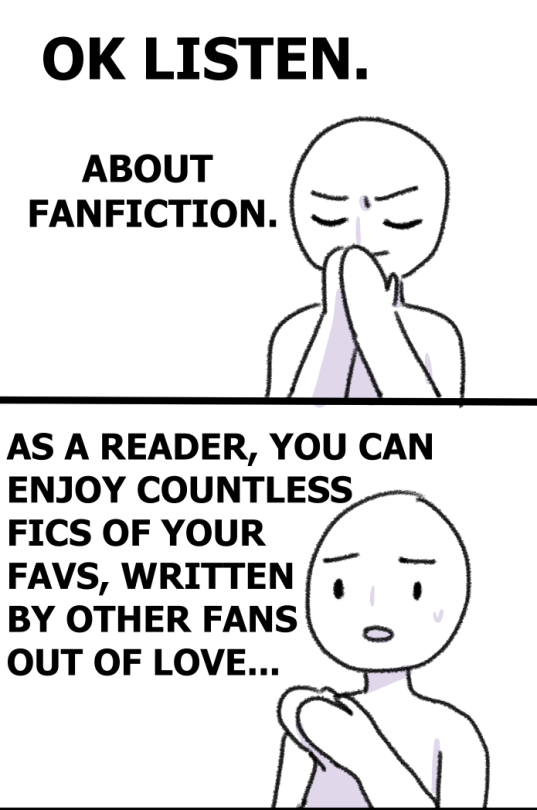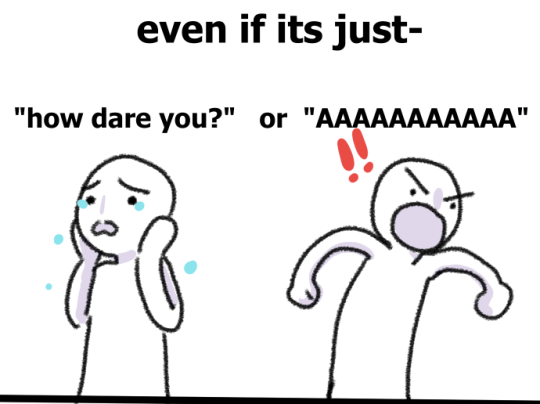Text
One of the things that’s really struck me while rereading the Lord of the Rings–knowing much more about Tolkien than I did the last time I read it–is how individual a story it is.
We tend to think of it as a genre story now, I think–because it’s so good, and so unprecedented, that Tolkien accidentally inspired a whole new fantasy culture, which is kind of hilarious. Wanting to “write like Tolkien,” I think, is generally seen as “writing an Epic Fantasy Universe with invented races and geography and history and languages, world-saving quests and dragons and kings.” But… But…
Here’s the thing. I don’t think those elements are at all what make The Hobbit and The Lord of the Rings so good. Because I’m realizing, as I did not realize when I was a kid, that Tolkien didn’t use those elements because they’re somehow inherently better than other things. He used them purely because they were what he liked and what he knew.
The Shire exists because he was an Englishman who partially grew up in, and loved, the British countryside, and Hobbits are born out of his very English, very traditionalist values. Tom Bombadil was one of his kids’ toys that he had already invented stories about and then incorporated into Middle-Earth. He wrote about elves and dwarves because he knew elves and dwarves from the old literature/mythology that he’d made his career. The Rohirrim are an expression of the ancient cultures he studied. There are a half-dozen invented languages in Middle-Earth because he was a linguist. The themes of war and loss and corruption were important to him, and were things he knew intimately, because of the point in history during which he lived; and all the morality of the stories, the grace and humility and hope-in-despair, was an expression of his Catholic faith.
J. R. R. Tolkien created an incredible, beautiful, unparalleled world not specifically by writing about elves and dwarves and linguistics, but by embracing all of his strengths and loves and all the things he best understood, and writing about them with all of his skill and talent. The fact that those things happened to be elves and dwarves and linguistics is what makes Middle-Earth Middle-Earth; but it is not what makes Middle-Earth good.
What makes it good is that every element that went into it was an element J. R. R. Tolkien knew and loved and understood. He brought it out of his scholarship and hobbies and life experience and ideals, and he wrote the story no one else could have written… And did it so well that other people have been trying to write it ever since.
So… I think, if we really want to write like Tolkien (as I do), we shouldn’t specifically be trying to write like linguists, or historical experts, or veterans, or or or… We should try to write like people who’ve gathered all their favorite and most important things together, and are playing with the stuff those things are made of just for the joy of it. We need to write like ourselves.
17K notes
·
View notes
Text
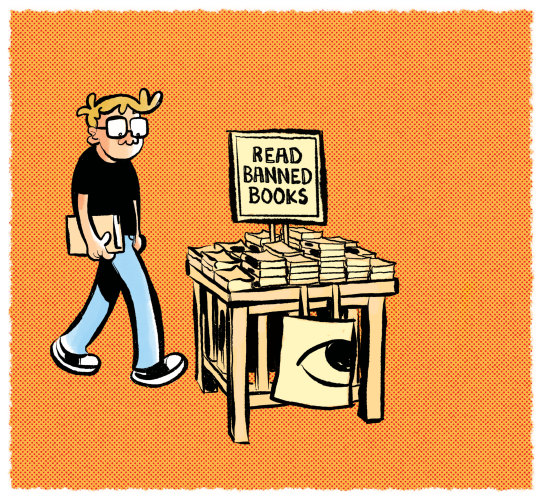
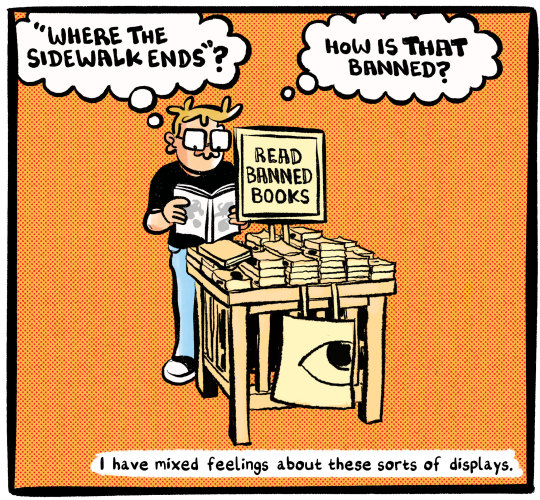
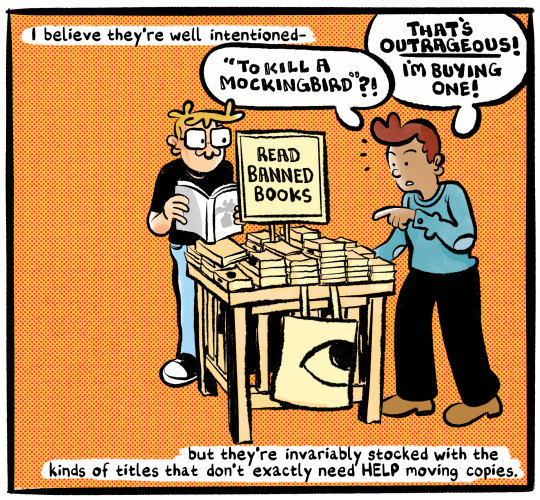
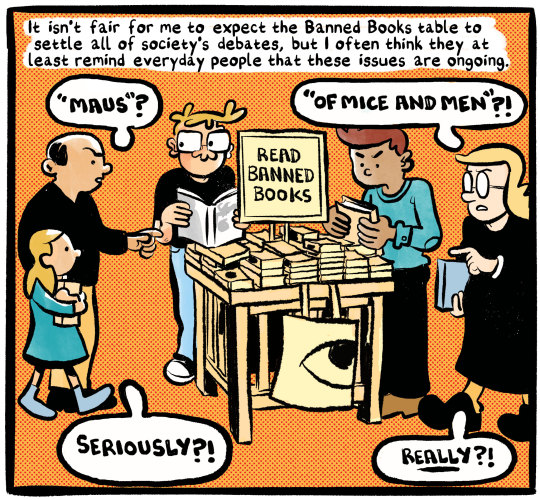

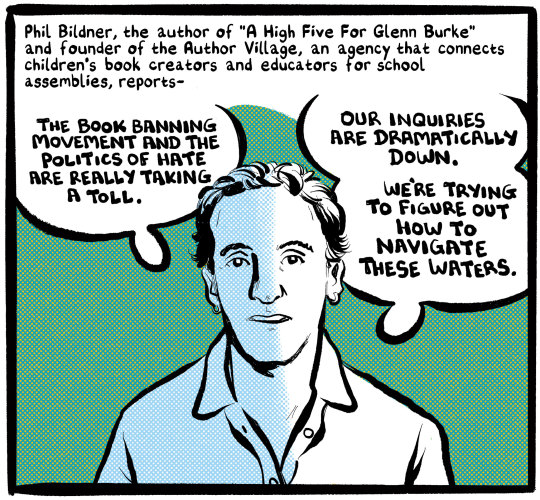
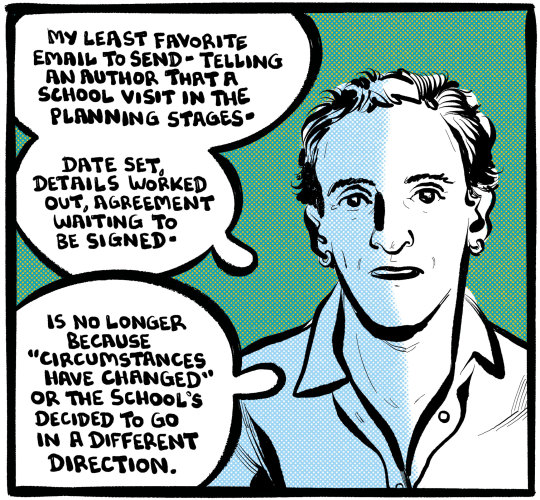

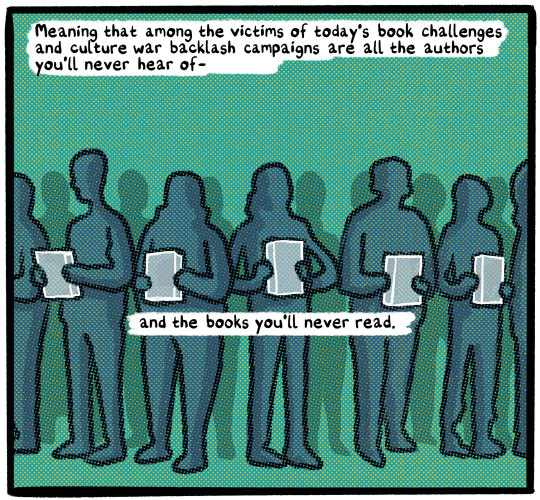
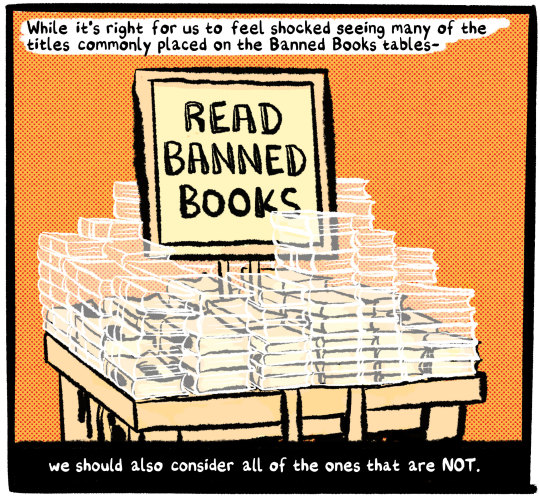

"Read Banned Books" a new full page cartoon essay published in The New York Times Arts & Leisure section today.

75K notes
·
View notes
Photo

Between Two Tomes
Part 2 of my Lost in the Pages series~ Next will be space themed :D
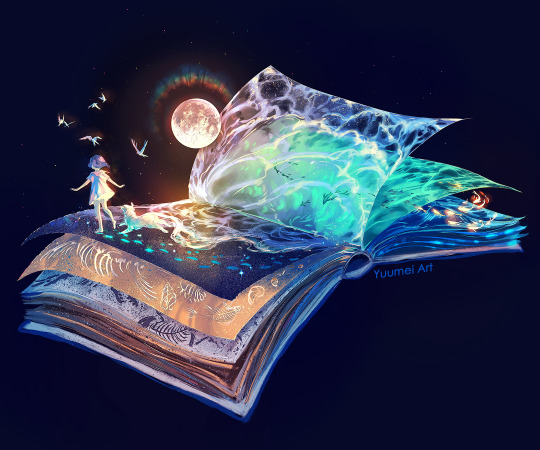
10K notes
·
View notes
Link
3K notes
·
View notes
Text
Love how tumblr has its own folk stories. Yeah the God of Arepo we’ve all heard the story and we all still cry about it. Yeah that one about the woman locked up for centuries finally getting free. That one about the witch who would marry anyone who could get her house key from her cat and it’s revealed she IS the cat after the narrator befriends the cat.
315K notes
·
View notes
Photo
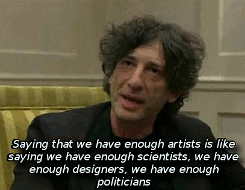
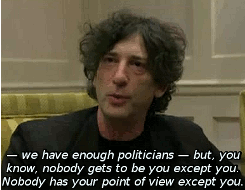
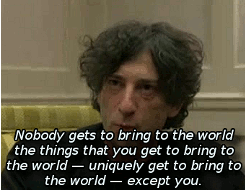




Neil Gaiman’s Advice to Aspiring Artists
67K notes
·
View notes
Text
Writing Morally Gray Characters
Morally gray antagonists and heroes can bring up many
interesting questions about your story's theme and plot. Yes, your
hero does want to save the world, but resorts to cruel ways of
bringing peace?
Being morally gray can also mean that the character is highly goal-
oriented and values efficiency and success over anything.
Deceiving Appearances
As is true in real life, a person's intentions aren't always obvious. A
character, their title, background or really just how they look might at
first indicate they're the hero type but surprise - they're not.
By hiding ulterior motives behind more apparent ones, you can add
depth to your morally gray characters. Appearances can be
deceiving, and that makes for a juicy read.
Morally Gray vs. Villains
Morally gray characters and villains are not strictly one and the
same. Yes, there is overlap-they can be villains-but the distinctions are there nonetheless.
I don't think having a dark past to provide motivations for morally
gray characters is too effective. They do intend to harm others, and
sometimes, that's just the way they are.
Recognition
Your morally gray character should recognize that their choices can
cause harm, intentionally or otherwise.
Although he's willing to risk the chance in his pursuit of knowledge,
he does actively recognize that his actions can result in negative consequences. He sometimes acknowledges this before he does
something, and sometimes only in hindsight.
Remorse
They must understand and experience remorse. When the
consequences of their actions wreck and story world and kills
people around her, she would certainly have regrets and even struggle to undo what she did.
The point here is, she won't regret until she has already caused the
wreckage.
Redemption
Finally, when even they feel things have gone too far, your morally
gray character must seek redemption however that manifests itself in your story.
For all their logic and reasoning, they are not without feeling. They
can grow to care for other characters and go out of their way
to help them at times, even save their life.
If you like my blog, buy me a coffee☕ and find me on instagram! 📸
1K notes
·
View notes
Text
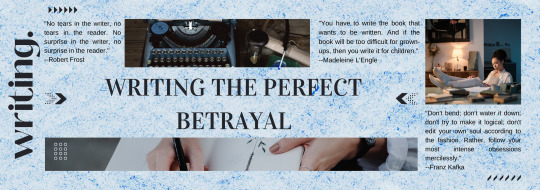
The classic betrayer
This is where everyone subtly knows that this guy's going to turn the other way.
The betrayer puts on a show for our heroes - kind, compassionate and supporting at first.
it just so happens that the villainthinks the heros are the bad guys.
make them actually likable.emotionally ruin the hero upon betrayal.
The remorseful traitor
whether he had bad intentions from the start or was deceived by
others, the betrayer regrets his choices.
when he realizes his mistakes, it's too late to stop the evil, which
introduces guilt.
throw the guilt and shame on the character.
even the protagonist can be a traitor! will others forgive him?
The Double Agent
this type of traitor will keep the readers wondering whether this guy is truly on your side.
keep your readers guessing. is that an evil smirk or a genuine smile? does he really love drinking, or is he just trying to get the hero drugged?
Snape in Harry Potter is a great example.
The guy can be good or bad - just keep balancing the two
Unrealiable narrators
these characters are not entirely betrayers, but horribly
misinformed. they can make others appear like traitors - when in truth, they just have it wrong.
pit your narrow-minded narrator against his allies.
these characters are great for misunderstanding plots.
have your narrator do irreversible damage to the hero. would they
forgive him?
Tragic betrayers
these are characters, due to their past wounds and trauma, cannot
help but betray the group.
they confess the hero's secrets under physical/mental torment and
doesn't have the backbone to do otherwise.
these characters can either be pitiful or frustrating would the hero still fight for the betrayer?
Play around with pov
you can have the readers know about the upcomong betrayal by
switching points of view, building up anticipation to the moment of
realization.
on the flip side, you can change povs in a way that the reader
doens't see what's happening at the hero's back.
If you like my blog, buy me a coffee☕ and find me on instagram! 📸
2K notes
·
View notes
Text
as both a fanfic writer and an original content writer i struggle so much with wording the fact that they ARE different and while you’re practicing and growing as a writer when writing fanfic, it is not the same as original writing and fanfic serves a different purpose than original content a lot of the time which is why fanfic “hits differently” and fanfic authors are able to focus on things that the canon might not and neither are inherently bad or lesser they’re just different and saying there’s no need for books when you have fanfic is oversimplifying a million things because of that
but there’s really no good way to word it without people getting really mad at me because 1. it’s kind of complicated and more nuanced than you’d think and 2. this is tumblr
#from fanfiction to original fiction#different skillsets#both are valid#but fanfic is a different genre#a different skillset
3K notes
·
View notes
Text
If you're lamenting the fact that you used to be able to shoot through a 500-page novel in like a day when you were in middle school and now you can't, it's worth bearing in mind that a big part of that is because when you were in middle school, your reading comprehension sucked. Yes, mental health and the stresses of adult life can definitely be factors, but it's also the case that reading is typically more effortful as an adult because you've learned to Ponder The Implications. The material isn't just skimming over the surface of your brain anymore, and some of the spoons you used to spend on maximising your daily page count are now spent on actually thinking about what you're reading!
48K notes
·
View notes
Text
Okay, so, looks like Google Docs might actually start implementing their rule about not sharing explicit content. (This includes writing.) How in the ever loving fuck am I supposed to back up 1,000+ stories that equate to 3 million+ words into fucking Microsoft Word????? And efficiently, for that matter?! HELP.
12K notes
·
View notes
Text
Let's talk about misdirection.
Misdirection in storytelling, through foreshadowing and other techniques, is a powerful tool that can enhance suspense, surprise, and engagement in your narrative and make plot twists more unexpected.
Remember to maintain coherence and avoid contrivances that may undermine the integrity of your storytelling.
Here are some techniques you can use to effectively misdirect readers:
Red Herrings: Introduce elements or clues that suggest a certain outcome or plot direction, only to later reveal that they were misleading. These false leads can divert readers' attention away from the true resolution.
Selective Detailing: Highlight certain details or events in a way that implies their significance, while downplaying or omitting others that might be more relevant to the actual outcome. By controlling what information readers focus on, you can steer their expectations.
Character Misdirection: Use characterisation to mislead readers about characters' true intentions, motivations, or identities. Create multi-dimensional characters who may behave ambiguously or inconsistently, leaving readers unsure of their true allegiances, motivations, or goals.
Foreshadowing: Employ foreshadowing to hint at future events or outcomes, but do so in a way that misleads interpretation. Provide clues that could be interpreted in multiple ways or that lead readers to expect one outcome while delivering another. (See my previous post about foreshadowing for more!)
Misleading Narration: Utilise an unreliable narrator or perspective to present events in a biased or distorted manner. Readers may trust the narrator's account implicitly, only to discover later that their perceptions were flawed or intentionally deceptive.
Subverting Tropes: Set up situations or scenarios that seem to follow familiar narrative tropes or conventions, only to subvert them in unexpected ways. This can keep readers guessing and prevent them from accurately predicting the story's trajectory.
Parallel Storylines: Introduce secondary storylines or subplots that appear unrelated to the main narrative but eventually intersect or influence the primary plot in unexpected ways. This can distract readers from anticipating the main storyline's developments.
Setting: Manipulate the setting or environment to create false impressions about the direction of the plot. For example, presenting a seemingly idyllic setting that harbors dark secrets or dangers.
Timing and Pacing: Control the pacing of your story to strategically reveal information or developments at opportune moments, leading readers to draw premature conclusions or overlook important details. (See my post on pacing for more tips!)
Twists and Reversals: Incorporate sudden plot twists or reversals that upend readers' expectations and challenge their assumptions about the story's direction. Ensure that these twists are logically consistent but sufficiently surprising to catch readers off guard.
Happy writing!
2K notes
·
View notes
Text
Ways to solve the Why Can’t They Use Magic To Fix Everything problem:
•Magic has a cost. The more powerful the spell, the more it drains the caster’s life.
•’We tried that ages ago.The gods grew angry at our arrogance and stripped most of our powers away.’
•Magic is tied to the stars and planets. Its full potential can only manifest on certain astrological events.(And these are once-in-a-millennia type events)
•Only one will a pure heart and selfless intentions can use their full power.
•All magic users are descendants of a (god/spirit). As the years have gone by, the blood has become more diluted, and magic has grown weaker as a result.
•Spell casters can only cast (finite number of spells). They end up using their gift on trivial matters.
•’After the war, we realized the dangers that magic presented. And so we sealed it away, lest it destroy the world.’
•Everyone has magic. Trying to solve one problem is futile as it can be easily undone(often violently and with much destruction)
•inverse of the above: everyone has magic, but their powers are limited and (mostly) harmless.
•Individual, company, or nation has a monopoly on the only substance that can negate magic. As they rule the world, they have installed anti-magic devices everywhere.
•Individual, group, company, or nation has a monopoly on magic. To insure their grip on power, all magic users that do not submit to them are killed.
•An act of good will spawn one of evil. The use of fire will cause somewhere to grow cold and dark. And to save a life, one must sacrifice another.
•The only magic people have access to is Chaos Magic. No one uses it, for obvious reasons.
—••• •• ——• ——• • ••• —•• •• —•—• —•— ••— •••
4K notes
·
View notes
Text
I was talking with my dad recently & we got on the topic of People Thinking They Can't Do Things, and like, he is at his core a well-intentioned person who genuinely wants the best for others, but he has definitely internalized some harmful ideas a la "anyone can do anything, the only thing stopping them is their own attitude". so I was like. I see where you're coming from, but let me tell you a story.
last year, I worked with 10 year olds- many of whom had never really spent time outdoors- in an outdoor education program where they came to spend a whole week doing shit outside in nature. the top two scariest experiences for these kids were 1) very tall metal tower, and 2) walking outside at night in the dark with no flashlights.
I tried a lot of different things to persuade them all to join me for each experience: I presented it with enthusiasm and passion, I did physical demonstrations and scientific explanations to help them understands how safe it was, I voiced my absolute commitment to their safety, I invited them to brainstorm ways to help each other and themselves feel safe, etc.
generally I always had at least 2-3 kids out of about 10 who opted out, or if they did join me, would spend the entire experience crying and freaking out. when it was over, they would conclude that even though they did not die- or even get hurt- it was so scary that it wasn't worth it and they never wanted to do it again.
then I changed the question I asked. instead of asking them to tell me whether they could do it or couldn't do it, I asked them to raise their hand for one of three options:
You can definitely do this.
It will be hard or scary or uncomfortable, but you can try to do this.
It will definitely be too hard, scary, or uncomfortable, and you cannot or should not try to do this.
suddenly, almost nobody was opting out of these experiences.
they would try, even if they were scared, because they know that being scared didn't necessarily mean that they couldn't do it at all. and more importantly, they knew that if they needed to stop, that was an option; they weren't trapped in their decision to try.
and the real takeaway here, for me, is in the nuance: people need to be able to challenge themselves and to be uncomfortable in order to grow, and people need to be able to opt out in order for opting in to be a safe option.
18K notes
·
View notes
Text
some rather basic tips to writing
Start with an idea: The first step in creating a good storyline is to come up with an idea. This can be anything from a character, a setting, or a plot point that you find interesting.
Develop your characters: Once you have an idea, it's time to start developing your characters. Think about their personalities, motivations, and backstories. This will help you create characters that are relatable and interesting to your readers.
Create a plot: With your characters in mind, it's time to start creating a plot. Think about what your characters want, what obstacles they will face, and how they will overcome them. This will help you create a compelling story that will keep your readers engaged.
Use descriptive language: When writing your story, use descriptive language to help your readers visualize the setting and characters. This will help them become more invested in the story and feel like they are a part of it.
Show, don't tell: Instead of telling your readers what is happening, show them through actions and dialogue. This will help your readers become more engaged in the story and feel like they are experiencing it firsthand.
Use dialogue effectively: Dialogue is an important part of any story, as it helps to reveal character traits and move the plot forward. Use dialogue effectively by making it sound natural and realistic.
Edit and revise: Once you have finished your first draft, it's time to edit and revise. Look for areas where you can improve the story, such as plot holes or weak character development. This will help you create a polished final product that your readers will enjoy.
By following these steps, you can create a good storyline and use effective writing techniques to engage your readers and keep them invested in your story.
936 notes
·
View notes
Text
“imagine caring so much about fiction” imagine being so lame that you scoff at the timeless human practice of falling in love with art and stories
40K notes
·
View notes
